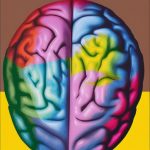What Students with PTSD and Their Classmates Should Know
The idea of Students with PTSD, or post-traumatic stress disorder, often gets laughed at by older generations. But if you look at the data — and just the latest headlines — it becomes clear this is a dismissive, condescending, and flat-out wrong attitude to have.
Students today are dealing with more uncertainties than ever before. While they may not have a World War II or Vietnam Conflict, they live with the constant fear of terrorism on their home soil. And that terrorism could be foreign or domestic.
It’s a stressful time when you don’t know who you can trust, for sure. But terror isn’t the only thing that might be causing students with PTSD. In the following article, we’ll be discussing the issue more at length and sharing some tips and resources you can put to use if you or someone you know is dealing with it. Let’s get started!

What Is Post-Traumatic Stress Disorder?
The National Institute of Mental Health (NIMH) defines PTSD as a chronic condition that develops in people who experience “a shocking, scary, or dangerous event,” adding that the symptoms may appear even in people who are not in immediate danger.
It produces a fight-or-flight response, and given the element of hallucination involved, that response can be potentially dangerous to both the sufferer and the people around him or her.
How Are Students with PTSD a Thing?
You might be able to easily believe members of our Armed Forces or law enforcement agencies could develop PTSD. After all, these individuals can be placed in situations of great peril. They can witness gruesome and deadly events, both in the moment and the aftermath. It’s enough to haunt anyone.
But how can you get PTSD during a time when your only worry that should exist is a difficult exam or a massive independent project in a class you’re struggling with? The simple answer: because you’re dealing with that, your home life, a rapidly developing brain, and raging hormones.
One, some, or all of these things can be very difficult on a young person. It can create, at least temporarily, a chronic anxiety that may evolve into PTSD. For those of you who are students, you get it. For the rest, here are just a few of the issues that are more common today than they used to be.
More Students Are Dealing with Sexual Abuse
While it’s hard to pin down the statistics on child sexual abuse due to under-reporting or reporting long after the abuse occurred, we do know something about what young people are going through on this front. Unfortunately, it’s a growing problem.
According to the National Center for Victims of Crime, “one in five girls and one in 20 boys are the victims of sexual abuse.” About 16 percent of teenagers between the ages of 14-17 experience sexual abuse. And children are at the most risk between the ages of 7-13.
This is a problem no one should ever have to deal with, but it’s especially difficult for young people at these student ages because they already have so little control over their own decision-making and rights. Throw in the fact that sexual abuse is hard to prosecute, and there likely are many more cases that do get reported that fall off the radar for lack of prosecution.
Students Are Taking on More Household Responsibilities
Families of today do not resemble the same dynamic of 50 or even 25 years ago. While the nuclear family used to be the norm as recently as the 1980s and ‘90s, it’s far less common today. That means a lot more single-parent families in which students have to take on adult responsibilities sooner than they would have years ago.
And even in families with two parents, the dynamic is no longer the same. Mom and Dad (or Mom and Mom) may have two jobs. This forces the student to fend for themselves, perhaps sooner than they’re ready for it. This forced “growing up” process is a lot to handle when coupled with other responsibilities.
Students Are Frequently the Victims of Violent Crime
According to the World Health Organization, “it is estimated that up to 1 billion children aged 2–17 years, have experienced physical, sexual, or emotional violence or neglect in the past year.” There are only around 7 billion people in the world of all ages. In lieu of that figure, these numbers are especially terrifying.
What’s worse, experiencing violence in the student years can have reverberations that impact the victim for the rest of their lives. It can damage relationships, lead to poor personal choices, and hold one back in the pursuit of their career. It also may lead to concerning medical conditions, such as depression, anxiety, and, you guessed it, PTSD.
Global Competition
As if the stress of all that wasn’t enough, students today are finding out that they have a much larger amount of competition they’ve got to deal with. As early as 25 years ago, location mattered much more. Getting a degree from a good school, setting up shop in a metropolitan center, and putting your best foot forward in the job interview would eventually get you where you needed to be.
No more. That’s because of the global marketplace for jobs. Students aren’t just competing with their fellow graduates. They’re competing with billions of others in other countries, many of whom are very competent and willing to work for way less thanks to greater ease in telecommuting.
And every human — from America to Australia — has to worry about artificial competition in the rise of AI. It’s enough to cause fears in anyone, but students are especially vulnerable because they have more of their work lives ahead of them.
They Are Dealing with More Cynical Older Generations
You’ve probably seen the memes on Facebook. One image shows a frail teenager with uniquely-colored hair and the caption, “My generation is going to start a revolution.” The other image is a black-and-white of a soldier (likely in WWII) smoking a cigar with a smirk and a caption that responds, “Your generation couldn’t start a lawnmower.”
The ironic thing about this meme and others like it: it’s often shared by a generation that was more privileged and had little to do with the heroic image of the WWII soldier. A meme alone shouldn’t ruin anyone’s day, but the existence of the meme is symbolic of a greater problem.
That problem: older generations today are more cynical about everything you do if you’re a student. They see social media as a waste of time. They see protests and walkouts as a form of whining. They accuse you of being entitled little whiners when they have and are living on the accomplishments of past generations.
It’s a lot to deal with, and because it’s coming from the people who should be mentoring you, it can make you uneasy about trusting anyone who’s not of your generation. This does little to better your emotional state and makes you more susceptible to conditions like PTSD.
They See the World Going in a Way Opposite to What They Are Being Taught
You believe in equality, in climate change, in being colorblind and accepting of all races. But the world you live in is a decade or two out-of-reach, and the current people in power couldn’t be more opposite from your ideals. Furthermore, you’re being taught in schools to think one way while the government seemingly does something else.
If that’s how you view the world — and that’s how many students do — then it’s enough to stoke the fires of anxiety further.
There Is Greater Cause for Stress from a Climate Standpoint
The science is pretty clear. The climate is changing. And while scientists are not as in agreement about how to fix the problem without tanking our economic system, letting things go as-is is the stuff of nightmares. You want to do something, but it doesn’t seem like anyone in power is doing anything. In fact, they may be acting intentionally in a manner that makes the problem worse.
Assuming you adopt this point-of-view, it’s easy to see why you would be freaked the freak out. The world you’re supposed to make your living in, raise a family in, etc., is at a tipping point. And there’s little you can do about it.
They Are Being Victimized by a 24-Hour News Cycle
The 24-hour news cycle hasn’t done anyone favors. It has created a need for constant content, and stepping up to fill that need have been some pretty unprofessional and incompetent people masquerading as journalists. Their mission: keep you well-stocked with things to be outraged about.
The way the media has gone about this: they’ve settled into a point-of-view (conservative/liberal), and they’ve made sure all the news they “report” is tinged with that world view. As a result, you always can find someone to agree with you or disagree with you, and you don’t have to listen too much to things like opposing evidence or other viewpoints if you don’t want. It can all add to the stress that induces PTSD.
Economic Blowback
In many parts of the world — US included — the economy isn’t doing too badly. But it’s coming at an educational, economical, and environmental cost. The ballooning national debt and the impending bankruptcy of Social Security are two things, in particular, making America a debtor nation.
And the more spending Washington does now, the more you’ll have to pay for it later. How can you do that when you’re paying back student loans and competing with machines and people across the globe for work?
Most economists agree there’s a bill coming due for current prosperity. If this is just one more concern you have about your own future (and your current powerlessness to stop it), then we can see how you might develop PTSD.
Technology Blowback
We’ve already made a brief mention of it, but AI deserves its own spot on the list of potentially PTSD-inducing factors. Why’s that? Because it could be one of the biggest job-killers, especially for the under-skilled who are trying desperately to grow their marketability (and racking up huge debts in the pursuit of it).
These fears were recently addressed in a MIT conference. Some believed the AI impact would not be as bad as first thought — that there might be some job displacement, but it would ultimately guide current and future generations of workers into higher-level career paths. But there’s no getting around the fact that for a large segment of the population, it will be “too late” to start over. This uncertainty can create more pressure on younger generations as well.
What Students with PTSD Should Know About Their Condition
If you feel you may be suffering from PTSD, the first thing you need to know is that there is help. Before signing off, we’ve put together a list of resources and tips that can help you through the storm. Here goes.
1. Other Students Can Be a Great Source of Support
Some of the best sources of support you’ll ever find may be sitting in the same classroom you are. Your peers face the same struggles. Some are equipped to handle them. Others aren’t. Still others find strength in numbers.
Wherever you believe you are in PTSD severity, you should make sure you surround yourself with a great support unit, and that begins with the people you’ve chosen to be your family. Friends, friends, friends! Get out there and make ‘em!
2. So Can Guidance Counselors and Other Teachers
Friends are great resources, but they’re not always the best-equipped to be dealing with issues as severe as PTSD. If you have a diagnosis or feel you have a more severe case of it, then seek professional help. Luckily, as students with PTSD, you have access to some great professional FREE resources in your guidance counselors and teachers.
Not only do most of these individuals enter the profession of education because they care about kids, but they’re also well-trained in recognizing and responding to the signs. If they can’t help you, they can route you into a program that can.
3. It May Not Go Away, But It Is Manageable
PTSD is not typically something you get rid of, but if you know it’s there and you’re seeking help, it is manageable. Don’t be resigned to it if that’s what you have. Know that you can live a happy and healthy life as long as you develop the right techniques and surround yourself with helpful people.
4. Know the Warning Signs
So what are the warning signs of post-traumatic stress disorder? If you’re going to be getting diagnosed or diagnosing yourself, then you’ll need to know them. The Anxiety and Depression Association of America lists the following as some of the most common (though these items are hardly exhaustive):
- irritable or aggressive behavior: do little things set you off? Do you find yourself fighting or arguing a lot with people over things that others don’t think is that big of a deal? Take a hard look at your conflicts when analyzing.
- reckless or self-destructive behavior: are you self-medicating? Taking prescription drugs not prescribed to you? Drinking a lot? Smoking?
- Hypervigilance: are you paranoid about getting something wrong? OCD over something in particular?
- exaggerated startle response: do you flip out over something unexpected that happens?
- problems with concentration: daydreaming a lot? Zoning out when others are trying to tell you something?
- difficulty falling or staying asleep or restless sleep: you may not go to sleep at the same time, or you may be waking up in the middle of the night.
Again, these are not exhaustive. So make sure you follow the link in this section to learn more and talk to a professional about what you’re experiencing.
5. Friendships Are Vital
When you’re seeking support from your peers (see tip/resource no. 1), make sure you’re doing so for substance instead of prestige. Don’t try to be one of the “cool kids” if the cool kids don’t have your best interests at heart. Seek out people who value you as a human being and who are going to be there for you regardless.
6. Intervention Now Is Better Than Intervention Later
The longer you go without getting help for your PTSD, the worse the reaction will be later when it finally “uncorks.” Friends of students with PTSD should hear this especially. Because you are all in this vital developmental stage of life, there are many issues that can be addressed effectively if you seize on them now. So try to make an impact in your friends’ lives if they’re suffering from this. Same goes for you, parents.
There Is Hope
Students with PTSD may find it a struggle to manage their responsibilities with the condition. That’s why everyone — peers, teachers, counselors, employers, and parents most especially — should be on watch. With the support of caring people, PTSD doesn’t have to rule a life.
[Featured Image by Bright Hub Education]








